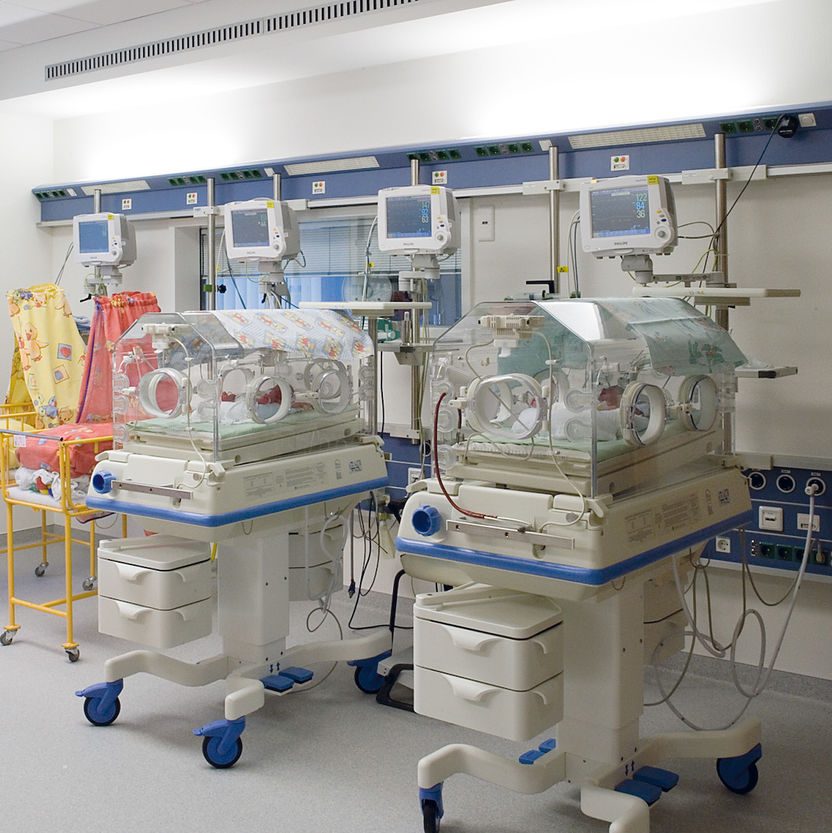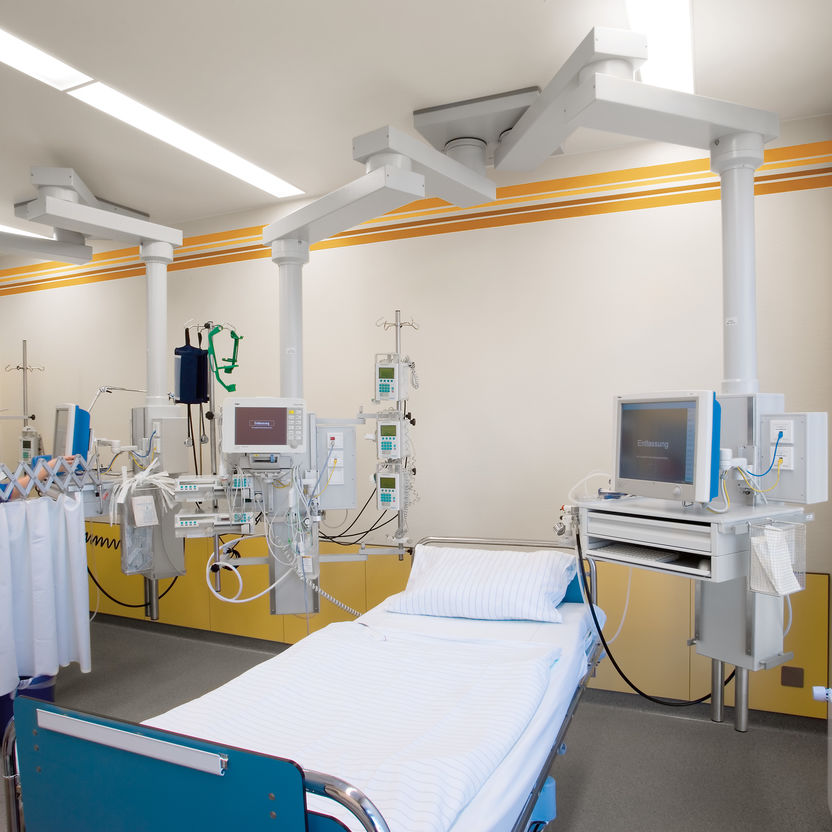Intensive medical treatment is provided in different areas of a hospital. In ward and care areas, some ward rooms are equipped with more advanced medical technology to allow implementation of continuous monitoring of patients’ vital signs (e.g. blood pressure, respiration, cardiological data) over limited amounts of time in acute cases of need. This way, patients are spared being moved to actual intensive care units.
Intensive care rooms

(a) Intensive care room for infants

(b) Ergonomic and highly effective intensive care workstation with all-round patient access – made possible by ceiling supply units
Figure 3.123: Intensive care rooms
Furthermore, there are actual intensive care units, which are usually attached to the surgical wing of a hospital and equipped with highly sophisticated medical technology.
Lighting of intensive care rooms must primarily facilitate treatment and monitoring of critically ill patients.
Intensive care rooms are equipped with several lighting systems: indirect general lighting as comfort lighting, similar to general wards, and direct-distribution (reading) lighting for support of simple examinations. In addition, stationary examination and treatment lighting with illuminance levels of up to 1.000 lx is required to facilitate immediate surgical interventions if necessary.
In intensive care units, patients are monitored continuously throughout the night. For this purpose as well as for monitoring of medical devices connected to the patient, observation lighting must be provided. In the patient room, 20 lx are the maximum permissible level to avoid interrupting sleep. Adjacent rooms with monitoring windows must have corresponding, glare-free lighting levels. This lighting must not disturb the patient, and therefore requires shielding and glare elimination on connecting windows. It should feature brightness regulation.
In horizontal supply units, it is possible to integrate general and observation lighting. Examination lighting is realised using ceiling luminaires (e.g. cleanroom luminaires).
At this point, variability of light in terms of level and colour as a new lighting quality criterion according to EN 12464-1 (see also chapter "Light and non-visual effects") has been utilised successfully in intensive care units for some time. The adjustment of artificial lighting in intensive care rooms to natural daylight progression referred to as "white-white control" or "dynamic light control" creates an impression of normalcy for patients in rooms with insufficient daylight supply, promotes trust in medical treatment and positively influences the healing process. To achieve this, light sources in the indirect-distribution general lighting with warm white and daylight white light colour are controlled in a time-based fashion analogous to natural light (see chapter "The melanopic efficiency of light"). For special requirements and emergencies, examination lighting with a neutral white light colour must be available for immediate activation.